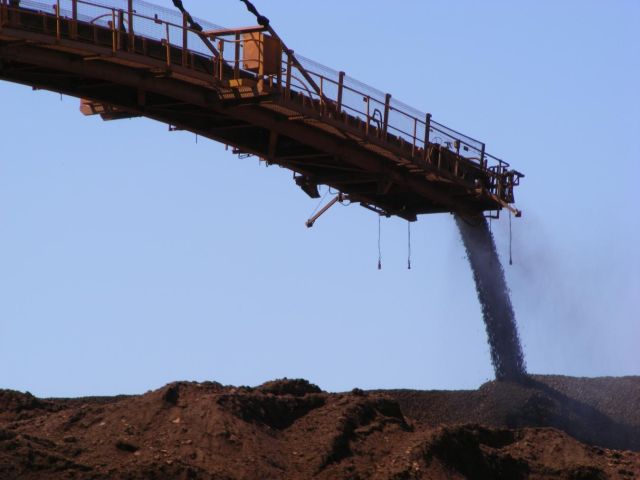
Economic forecasting agency BIS Shrapnel has reported that engineering work, spurred on by the mining boom, would be about $128 billion in Australia this financial year.
It may be easy to suggest that, despite the rumours, the mining boom is set to continue long into the future.
However, the report was quite downbeat. ABC Online said BIS Shrapnel predicted that a "slowdown in mining investment and its related infrastructure is expected to reduce activity by 5.4% next financial year … engineering construction will be 20% below this year's peak by 2016-2017."
The reason was made quite clear. The senior manager of Infrastructure and Mining at BIS Shrapnel, Adrian Hart, said: "The decline in mining investment from here is the key reason why the overall engineering construction market is heading for decline."
The importance of the decline in mining investment can be seen by the fact that last year mining investment was responsible for half of Australia's economic growth.
Does this mean the mining boom is coming to a crashing halt and Australia will face severe economic decline?
The National Australia Bank said on March 7: “The recent capex [capital expenditure] and exploration expectations data suggest that mining investment may be approaching a turning point. A decline is inevitable: the question is when and how fast.
“On the basis of past engineering construction commencements, there are reasons to believe that there is a risk of a decline in 2014 big enough to take 2 [percentage] points off GDP growth in that year unless another ‘mega’ project starts soon.”
The question of “when and how fast” will shape Australia's politics over the next period. The “optimists” say that when they can admit that the investment boom is coming to an end, the next stage of the boom will begin, with there being a shift from capital investment to exports. In other words, investments will begin to bear fruit.
They also say there is a new wave of projects collectively worth $126 billion on the way, which will ensure the investment peak will extend over a longer period.
Certainly this is what spurred investment, as businesses try to get a piece of the export market to the resource intensive Chinese and Indian economies in particular.
Yet there are reasons to doubt that exports can just take the place of investment. This isn't just linked to China's overall economic growth, which isn't growing as much as it was two years ago. A shift is occurring in the Chinese economy away from a resource intensive import-oriented one to an economy more focused on internal consumption.
This has been borne out in the latest figures, as Trading Economics points out:
"Domestic consumption was the biggest driver of growth in Q1, delivering 4.3 percentage points of the 7.7 percent total. Capital formation delivered 2.3 percentage points while exports generated the 1.1 percentage point balance."
As Ross Garnaut, former advisor to the Hawke government, said: "China is moving away from resource-intensive growth; in 2012, thermal power generation grew just 0.6 per cent, as China turned to hydro-electricity, wind and nuclear power"
China's demand for iron ore has slowed but the number of countries producing iron ore has increased.
It was hoped that even with a decline in demand for iron ore and coal, that exporting gas would make up for it.
For instance, in 2009, Western Australia Premier Colin Barnett called the state the “Saudi Arabia” of gas. However, the US has already begun exporting gas at low prices, meaning the capacity for mega profits to justify the huge investments is just not there. That is one of the reasons many big liquefied natural gas projects have been shelved in Australia.
Garnaut said: “The consequences for Australia are that the terms of trade will come off and they have a long way to fall, Secondly, our resources investment boom will come to an end. That means instead of having 8 per cent of GDP in resources investment, it will return to about the long-run average of 2 per cent. This will be a hit to the Australian economy that we have not experienced in modern times.”
Garnaut, a key architect of the “structural reforms” of the 1980s that saw a big shift from wages to profit, sees a form of austerity as the key to returning Australia to normal. He said: “The coming requirements are going to be the need for broad-based restraint, shared sacrifice across-the-board and an emphasis on reforms to deliver productivity.”
In economist’s language, this means cuts to social spending and wage declines while workers will be expected to work harder.
The Reserve Bank of Australia is, meanwhile, pursuing a low interest rate policy to stimulate investments in other sectors of the economy, so that any decline in the mining sector could be taken up elsewhere. It doesn't seem to be working. Non-mining business investment had its lowest share of GDP on record last year.
The federal government and the Reserve Bank want everyone to believe that things will be fine. However, the general historical record is that mining booms in Australia don't tend to decline slowly but rather sharply — and the signs are there that while boom is not yet over, its end is in sights.
The question will be what comes in its place. The capacity to engage in fiscal stimulus is restricted by the fact that successive governments were not able to ensure that mining companies were taxed properly. In fact, the Labor government has only cut the mining industry’s tax rate, which a Tony Abbott government seems sure to cut further.
Australia could be facing a situation of economic decline and social spending cuts, which would put us in the category of just about every other advanced economy, made worse by the fact that the boom could have been used for social spending but has mostly been squandered enriching a tiny minority of people.